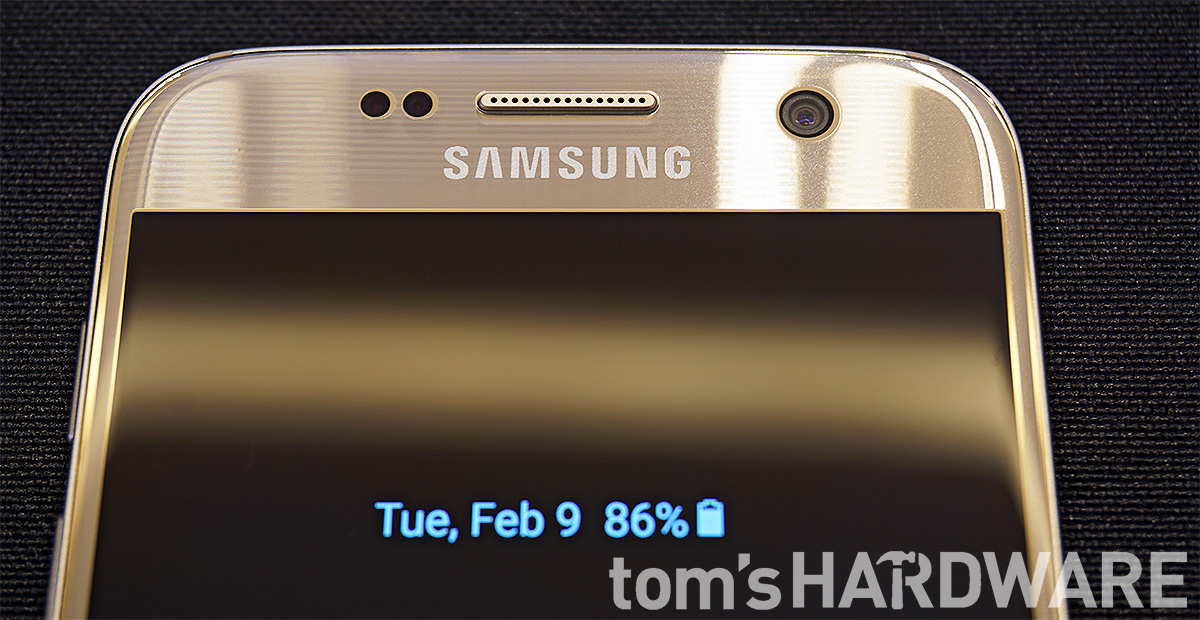Samsung Galaxy S7 And S7 Edge Preview
Hardware
In the past, Samsung has equipped its Galaxy devices with different hardware for different regions, generally preferring Qualcomm SoCs for the North American market and its own Exynos chips for other regions. Last year, Samsung decided to use its Exynos 7420 SoC, the first to use a 14nm FinFET process, exclusively for its Galaxy S6 phones, avoiding the Snapdragon 810 and its thermal problems. With Samsung developing its own custom 64-bit CPU for the Exynos 8890, along with a new high-end Snapdragon from Qualcomm, it would not be surprising to see Samsung revert back to dual-sourcing SoCs for the Galaxy S7. While Samsung has not specified what chip will power its new flagship globally, we do know that the S7 will use Qualcomm's new Snapdragon 820 for the North American market.
Featuring four of Qualcomm's new custom 64-bit Kryo CPUs arranged in a heterogeneous dual-cluster configuration, with one cluster optimized for higher performance and the other optimized for lower power, the 820 focuses on improving single-threaded performance. In our performance preview of the Kirin 950, we found that Kryo holds an instructions per cycle (IPC) advantage over the Cortex-A72 CPU in both integer and floating point operations. However, octa-core SoCs such as the Kirin 950 can perform better when running multi-threaded workloads. The 820, coincidentally, uses Samsung’s second-generation 14nm LPP (Low Power Plus) FinFET process that enables lower power consumption at a slightly higher frequency than the first-generation LPE process used for the Exynos 7420.
Samsung pairs Qualcomm's SoC with 4GB of LPDDR4-1866 RAM, which should help alleviate the memory pressure problem that limited the Galaxy S6’s multitasking performance.
All of the Galaxy S6 phones include two or three options for internal storage capacity, with the S6 and S6 edge offering up to 128GB. The Galaxy S7 and S7 edge come in only one configuration, however: 32GB. If that's not enough, the internal UFS 2.0 NAND can be supplemented with a microSD card.
The Snapdragon 820 includes an integrated X12 LTE modem capable of Category 12 download speeds of up to 600Mbps and Category 13 upload speeds of up to 150Mbps. The Galaxy S7 also includes support for 802.11ac MU-MIMO Wi-Fi, with peak theoretical throughput of up to 867Mb/s, and Bluetooth 4.2 LE.
Hardware support for Samsung Pay, the company's wireless payment system, first appeared on the Galaxy S6 and S6 edge, with software and vendor support rolling out late last year. Like Apple Pay, it uses the fingerprint scanner to authorize payments at terminals supporting NFC. Unlike Apple Pay, Samsung's solution works at most traditional magnetic stripe credit card terminals too, making it a far more useful solution.
Get Tom's Hardware's best news and in-depth reviews, straight to your inbox.
-
Nashten Glad to see that Samsung brought the MicroSD card slot back.Reply
I still won't buy a Samsung phone, but they look even better. I can't wait to see what the SD820 holds in store for us when more products hit the street with it.
I shouldn't talk about SD slots though considering I own a Nexus 6... :D -
xHDx What staggers me is how does a Phone manage to use that much RAM? Windows uses a max of 2/2.5Reply
-
Edwin Herdman The "(sensors with) smaller pixels are bad" line is a myth, and I'm disappointed to see it spread here. There are densely packed sensors, and there are physically large sensors - both are good things.Reply
Of course, if you had the exact same pixel count, larger pixels are naturally better, but this is not the question facing sensor makers. The "small pixels" line is harmful because it leads people to think that small pixels are naturally compared to large pixels - almost nobody does this, because it would mean viewing pixels off different size sensors at the same size. With a few exceptions, people compare the full images at the same size - where total sensor size is much more important.
DP Review's Richard Butler took a look at this question last year, with some extra math details on page 2 of the article "The effect of pixel size on noise." -
Calvin Huang Reply17541248 said:Micro-usb 2.0...
Come on!! Really?
I have a phone with USB-C (Nexus 6P), and while I do appreciate the ergonomics of the new plug (it both feels more secure while being less awkward to insert/unplug), the lack of compatibility is a huge drawback. I have to be sure to always carry my own cables with me, and there are no wireless charging dongles that use USB-C. So if you go to Starbucks and want to make use of their Qi charging pads, you're SOL. Granted, it'd be less of an issue if the device had Qi charging built-in, but in the case of the S7, it still doesn't make sense to release a phone that isn't compatible with their VR hardware. -
thezooloomaster ReplyMicro-usb 2.0...
Come on!! Really?
Who uses USB on phones for anything other than charging these days, anyway? -
none12345 Removing the MicroSD slot, and the waterproofiting from the s5 were 2 big mistakes. Glad to see they realized their stupidity and added them back in for the s7.Reply
I wouldn't even consider a phone that doesn't have a microsd slot.(or whatever replaces it in the future). The non-removable battery sucks, but its far easier to live with when the waterproofiting and microsd slot are back in. -
MasterMace USB 2.0 and a locked down battery are big signals for me to stay away from Samsung, still. That, and my experience with the GS4Reply -
giovanni86 Still concealing the battery. There almost back to normal. if there note 6 doesn't have battery removal its another year im skipping my Note 4 is plenty.Reply
